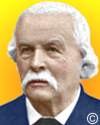
On 6 July 1817, Rudolph von Kölliker was born, one of the founders of embryology. With pioneering microscopic work on tissues, he identified the cell structure of tissues, that nerve fibres are elongated cells, and the cellular form of the egg and sperm. He also suspected that the cell nucleus was involved in heredity, but it was for others who came later to unravel that mystery. For much more background, read his obituary in the British Medical Journal, Rudolph Albert von Kölliker from 1905.

On 6 Jul 1885, French scientist Louis Pasteur and his colleagues began a series of injections to save a 9-year-old boy from a dreaded disease. Pasteur, a French chemist and a founder of microbiology, prepared important vaccines for several diseases. Today's book pick is: The Private Science of Louis Pasteur (Princeton Legacy Library), by Gerald L. Geison, a Princeton University history professor. In giving Pasteur the close scrutiny his achievements and their darker sides deserve, Geison’s book offers compelling reading for anyone interested in the social and ethical dimensions of science. Geison presents this unadorned truth after careful research from scrutinizing Pasteur’s private papers and laboratory notebooks, available only in recent years. This biography considers the complexities of science as it is actually created, instead of merely clinging to comforting and heroic myths.
It is available from Amazon, typically about New from $52.21. Used from $4.05. (As of earlier time of writing - subject to change.)
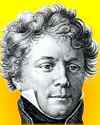 | Nature becomes fertile only by virtue of laws that oblige matter to organize itself into one of a number of necessarily very simple primitive forms. Because of their very simplicity, these are capable of constituting the basis for increasingly complex bodies, by the addition of organs calculated according to identical laws of possibility. |
 | I observed on most collected stones the imprints of innumerable plant fragments which were so different from those which are growing in the Lyonnais, in the nearby provinces, and even in the rest of France, that I felt like collecting plants in a new world… The number of these leaves, the way they separated easily, and the great variety of plants whose imprints I saw, appeared to me just as many volumes of botany representing in the same quarry the oldest library of the world. |
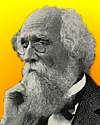 | It is true that the trees are for human use. But these are aesthetic uses as well as commercial uses—uses for the spiritual wealth of all, as well as the material wealth of some. |
| Before you look at today's web page, see if you can answer some of these questions about the events that happened on this day. Some of the names are very familiar. Others will likely stump you. Tickle your curiosity with these questions, then check your answers on today's web page. | |
| Births | |
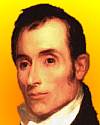 | Alexander Wilson, born 6 Jul 1766, was a Scottish-born American naturalist and poet whose pioneering work in 9 volumes, (1808-14), established him as a one of the foremost naturalists of his time. What was the subject of his 9 volume work which made him one of the founders in this field? |
 | Antoine de Jussieu, born 6 Jul 1686, was a physician and botanist who wrote many papers on human anatomy, zoology, and botany, including one on the flower and fruit of the coffee shrub. What was this botanist's nationality? |
| Deaths | |
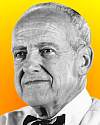 | Nathaniel Wyeth (1911-1990) was a US chemist and inventor, brother of distinguished American painter Andrew Wyeth. In 1973, a patent was issued to him for a beverage bottle plastic that was the first plastic strong enough to hold highly pressurized carbonated beverages without bursting. What is the common name of this plastic? |
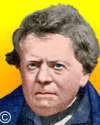 | A German physicist (1789-1854) showed by experiment (1825) that there are no “perfect” electrical conductors. He stated “If the given temperature remains constant, the current flowing through certain conductors is proportional to the potential difference (voltage) across it.” Can you name this scientist? |
| Events | |
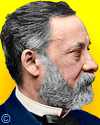 | On 6 Jul 1885, French scientist Louis Pasteur and his colleagues injected the first of 14 daily doses of rabbit spinal cord suspensions containing a progressively inactivated virus into 9-year-old Joseph Meister who was at risk for a certain infection. The immunization was successful. The boy grew up and became caretaker at the Pasteur Institute. The vaccination was designed for protection against which virus? |
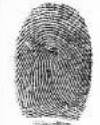 | On 6 Jul of a certain year, John Walker's fingerprints were the first ones to be exchanged by police officials in Europe and America. Law enforcement units in London and St. Louis, MO. completed the exchange. In which decade did this international exchange of fingerprints take place? |
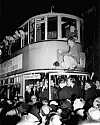 | On 6 Jul of a certain year, the last London tram ceased operation when it arrived outside New Cross depot. Large crowds had witnessed it travel along its route. Trams began service in London in the early 1900s, but had come to be regarded as too noisy and dangerous. They were replaced with electric trolleybuses which needed no tracks. In which decade did this last London tram make its last trip? |
Fast answers for the previous newsletter for July 5: the dating and interpreting of past events by the analysis of tree rings • Robert Fitzroy • Phineas Taylor • platinum • Scotland.
 If you enjoy this newsletter, the website, or wish to offer encouragement or ideas, please send feedback by using your mail reader Reply button.
If you enjoy this newsletter, the website, or wish to offer encouragement or ideas, please send feedback by using your mail reader Reply button. Your click on a Facebook, StumbleUpon, or other social button on the site webpages is also a welcome sign of appreciation. Thank you for using them.
© This newsletter is copyright 2020 by todayinsci.com. Please respect the Webmaster's wishes and do not put copies online of the Newsletter — or any Today in Science History webpage. (If you already have done so, please remove them. Thank you.) Offline use in education is encouraged such as a printout on a bulletin board, or projected for classroom viewing. Online, descriptive links to our pages are welcomed, as these will provide a reader with the most recent revisions, additions and/or corrections of a webpage. For any other copyright questions, please contact the Webmaster by using your mail reader Reply button.
--
If you do not want to receive any more newsletters, Unsubscribe
To update your preferences and to unsubscribe visit this link
Executive Real Estate Business Class
Blog Archive
-
▼
2021
(585)
-
▼
July
(50)
- Newsletter for Saturday 31 July.
- Newsletter for Friday 30 July.
- Power off and play this summer!
- Newsletter for Thursday 29 July.
- Newsletter for Wednesday 28 July.
- Newsletter for Tuesday 27 July.
- Newsletter for Monday 26 July.
- Newsletter for Sunday 25 July.
- Newsletter for Saturday 24 July.
- Newsletter for Friday 23 July.
- Newsletter for Thursday 22 July.
- Newsletter for Wednesday 21 July.
- Newsletter for Tuesday 20 July.
- Newsletter for Monday 19 July.
- The Machines That Built America Premieres Tonight
- Newsletter for Sunday 18 July.
- Newsletter for Saturday 17 July.
- Newsletter for Friday 16 July.
- Newsletter for Thursday 15 July.
- Newsletter for Wednesday 14 July.
- Newsletter for Tuesday 13 July.
- On This Day for July 12 - Geraldine Ferraro design...
- Newsletter for Monday 12 July.
- Inventing ‘The Machines That Built America’
- On This Day for July 11 - Duel between Aaron Burr ...
- Newsletter for Sunday 11 July.
- On This Day for July 10 - Telstar 1 launched, John...
- Newsletter for Saturday 10 July.
- On This Day for July 9 - Catherine the Great assum...
- Newsletter for Friday 9 July.
- New Season! Hope, Through History Podcast
- On This Day for July 8 - Vasco da Gama's first voy...
- Newsletter for Thursday 8 July.
- Ending soon: savings that pop! 🎆
- On This Day for July 7 - Hawaiian Islands annexed ...
- Newsletter for Wednesday 7 July.
- On This Day for July 6 - Anne Frank forced into hi...
- Newsletter for Tuesday 6 July.
- On This Day for July 5 - Israel's Law of Return pa...
- Newsletter for Monday 5 July.
- On This Day for July 4 - Declaration of Independen...
- Newsletter for Sunday 4 July.
- July 4th Sale at the HISTORY Store!
- On This Day for July 3 - Battle of Gettysburg ende...
- Newsletter for Saturday 3 July.
- On This Day for July 2 - Civil Rights Act signed, ...
- Newsletter for Friday 2 July.
- July 4th savings that pop!
- On This Day for July 1 - Dominion of Canada establ...
- Newsletter for Thursday 1 July.
-
▼
July
(50)
-
Blogroll
-
About
HistoryFact










0 comments:
Post a Comment